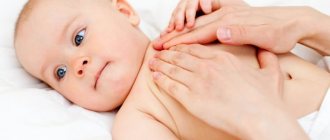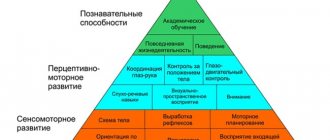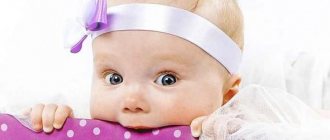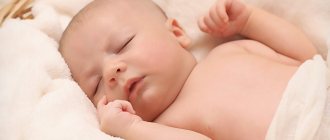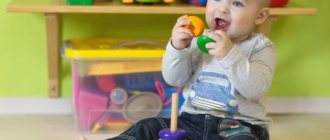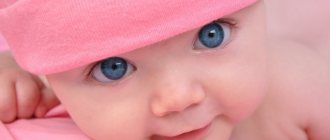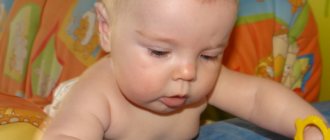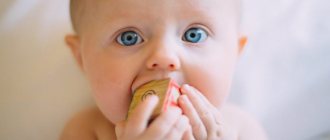Norms of physical development
According to medical data, at 2 years and 4 months, boys and girls have different weights and heights. Boys weigh on average from 10 to 15.5 kg, while girls weigh from 10.5 to 16 kg, while the height of the former is from 81 to 95 cm, and the height of the latter is from 82 to 96 cm.
As you can see, the girls in
2 years and 4 months old may be slightly larger than boys, and this is normal. Over time, boys will be able to catch up and surpass girls in both height and weight.
In the first half of the third year, the children already have quite a lot of teeth, so they can easily cope with most of the food offered to them. Again, if the child’s teething process began later than usual, for example from 9-10 months, then there is no need to worry about their lack of teeth by the age of two years. The full number of baby teeth will definitely appear in the baby’s mouth by the age of three.
What you need to know about your baby's daily routine
A child of 2 years and 4 months, whose development proceeds in a timely manner and without failures, needs to sleep up to 12 hours a day. On average, this is 9-10 hours of sleep at night, and 2-3 hours of daytime sleep. Parents should try to maintain the baby’s habit of resting during the day, as these several
hours are necessary for the child’s body to fully restore strength and spend active time in the afternoon.
A baby at this age eats four meals a day with breaks between meals of no more than four hours. The baby's menu should not include harmful foods, such as pickles, canned food, fried, spicy and sweet foods.
It is important that the child’s diet includes healthy and fresh foods that are subject to minimal heat treatment. In order for your baby to enjoy his appetite, you need to make sure that the food is not only balanced and healthy, but also tasty, attractive and varied.
Baby's basic skills at 28 months
In the first half of the third year, the child can already do a lot:
- uses a spoon, fork, cup, and does it quite carefully;
- under the guidance of parents, washes hands and brushes teeth independently;
- controls the urge to go to the toilet and promptly informs parents about them;
- uses a potty or toilet;
- takes part in the process of dressing and undressing, tries to button and unfasten clothes independently;
- turns pages in a book;
- goes up and down stairs, holding onto the railing;
- opens and closes locks and doors.
In addition, a baby’s skills at 2 years and 4 months include a whole range of physical skills that he manages to develop well by this time. For example, he can:
- maintain balance when trying to stand on your toes;
- walk on uneven surfaces, overcoming obstacles;
- squat and stand on tiptoes;
- play different ball games;
- take part in catch-up games;
- capture the essence of the game of hide and seek, etc.
All these skills confirm that the physical development of a child at the age of 2 years and 4 months reaches a fundamentally new level.
How does a baby's intelligence develop?
By the age of two, the baby’s knowledge is improved and replenished with new ones. At the same time, it is noticeable how much better fine motor skills and general coordination of movements have become. A child of 2 years and 4 months is capable of subtle and precise manipulations with toys; in addition, already at this stage of his life it is possible to thoroughly determine the “leading” arm and leg.
Speech
Speech development is very important, because speech skills allow a child to interact with people around him, achieve goals, satisfy his needs through requests and explore the world. Basic skills that should be mastered by the age of two or three:
- At two years old, a baby’s vocabulary consists of approximately 100-150 words, and by three years it will already be close to 300 words. Of course, some of them may not be pronounced as they should be, but it will still be possible to understand them.
- The baby can name objects and use words to describe the environment around him.
- The baby can know which groups certain items belong to (for example, vegetables, dishes, furniture, fruits, and so on).
- At two years old, the baby will construct short sentences consisting of three words. At two and a half years old, the baby will be able to speak in well-constructed phrases. By the age of three, the child will be able to use pronouns, verbs and adjectives and agree with them correctly. In addition, the baby will be able to use prepositions as intended.
- A child at this age will be able to describe his condition (for example, say that he is hungry, report that he is cold or hot), ask for something.
- By the age of three, a child can easily learn a short poem consisting of four lines.
- At this age, kids actively ask questions.
- The child can describe the picture, answer some questions related to it or, for example, events happening around it.
- The baby will be able to not only answer questions, but even maintain a conversation.
- The child will try to communicate with peers.
- At this age, kids begin to ask questions.
What should a baby be able to do at 2 years and 3 months?
So, what should your child be able to do by this age - 2 years and 3 months?
| Household skills | Physical skills | Intellectual abilities |
| independently uses cutlery – spoon or fork | keeps balance on gymnastic equipment | Is the pencil held correctly? |
| carefully drinks from a cup with a handle, a glass without handles, or a bottle | jumping on a trampoline | draws straight lines |
| brushes teeth under adult supervision | runs fast | distinguishes colors and geometric shapes |
| asks to go potty | hops in place on two legs | builds towers from cubes |
| helps with dressing and undressing, can choose suitable clothes for himself | jumps from a small elevation (from a ladder step) | Based on a model from a construction set, he assembles various simple structures - houses, cars, etc. |
| turns the pages of books while looking at pictures | crouches | assembles the pyramid in the correct and reverse order |
| climbs stairs and steps without handrails | rises on tiptoes and walks on tiptoes | names and shows various objects: animals, objects, vegetables, fruits, etc. |
| opens and closes interior doors | knows how to play with the ball: throws, catches, kicks it | knows and speaks about 200 words |
| helps parents with household chores (cleaning the room, washing dishes, preparing some simple dishes, etc.) | hiding and playing catch up | builds phrases and simple sentences of 2-3 words |
Naturally, the listed abilities of a baby aged 2 years and 3 months are not the standard, because each child develops individually. Therefore, parents, after reading this table and comparing it with the skills and abilities of their child, can figure out which direction they should move for their additional development.
What should a 3 year old child know and be able to do?
By the age of three, children begin to actively speak and expand their vocabulary with new concepts and terms.
Even those children who previously showed little success in communication begin to actively use previously acquired knowledge. Over the course of six months, with systematic studies, they catch up with their more talkative peers, mastering all the necessary knowledge.
The average skills that a child should acquire by the age of three include:
- The ability to draw and explain what he draws. When drawing at this age, it is typical to use simple lines and figures, and possibly imitative writing in the image of an adult;
- Image of objects and scenes from life. Modeling from plasticine figures of familiar objects and people;
- Memorize poems and songs. This skill is formed through repeated repetition of one material by adults in a playful way.
Learning new material is carried out gradually: you can ask the child to first finish a line of a well-known poem or song, after which the number of words called by the child should increase.
Speech development
The vocabulary ranges from 250 to 700 words, some children show results of up to 1500 words, which are arranged in sentences of 5-8 words. The child expresses his feelings using words.
Words begin to change in numbers and cases, and questions related to knowledge of the world around us are transformed from the form “what is this?” in “where?”, “where?”, “why?”, “when?” according to the situation.
- When speaking, attempts at word creation and rhyming appear; when communicating, he speaks with pleasure to adults and children;
- Can tell about a read fairy tale based on a picture, restore the order of actions in a well-known fairy tale, show familiar objects and events in the image;
- Knows his first and last name. Knows his age and shows it on his fingers;
- Distinguishes people by gender and age;
- Knows the parts of the body and their purpose;
- Prepositions appear in speech.
Showing curiosity
- A three-year-old child can freely draw parallels in parts of the human body and animals;
- When playing, he actively uses the association of his own “I” with his favorite character, answers the question “who are you?” in Game;
- Uses role-playing conversations in the game, imitating various characters. Can voice both himself and the doll.
- The ability to recognize a familiar object or animal by detail appears (trunk - elephant, skirt - girl).
- Can count to three, knows the meaning of the words many and few.
- Begins to distinguish between left and right, but errors are still possible.
- Correctly names four primary colors and a number of shades, while already being oriented in the seven colors of the spectrum, knows black and white. Appeals with this knowledge, showing it in the picture at the request of an adult.
- Places objects one into another (matryoshka doll, bowls, caps) at the request of an adult or during independent play.
- Can recognize an object by touch and distinguishes texture.
- Puts together simple mosaics of 2-4 parts without the help of an adult.
- Builds turrets, houses and other familiar simple objects from cubes at the request of an adult or during independent play.
- Can do one activity for quite a long time.
At the age of three, many children begin to attend preschool educational institutions, but this is not a reason to stop homeschooling with the child. In such a situation, the adult must adjust the time of the lesson and the amount of information offered.
If parents send their child to kindergarten, it is worth adjusting the material for home study based on the kindergarten program, and offering the child classes in areas that are not available in the kindergarten.
If you liked the article, please share a link to it
Child's daily routine and nutrition at 2 years and 4 months
A child of 2 years and 4 months needs about 12 hours a day to sleep, of which he sleeps 2-2.5 hours during the day. Try to maintain daytime sleep for as long as possible, so that the baby’s body can fully recover at these moments.
The time when you put your baby to bed should be constant; you should not allow him to “overstay.”
The baby should be fed 4 times during the day with breaks of up to 4 hours. Avoid fried, smoked, overly fatty or salty foods, and excess empty calories in the form of sweets and baked goods. There should be no semi-finished products on the children's table. Food should be light, varied, easily digestible, and dishes should be attractively presented.
Development of intelligence and cognitive processes of a child at 2 years 4 months
The child accumulates new knowledge, fine motor skills improve, coordination of movements is practiced, subtle manipulations with various objects become subject to him, and the “leading” arm and leg are determined.
What else can a toddler do?
- Hold a pencil or pen correctly (with three fingers).
- Draw vertical lines and similar circles.
- Distinguish 4 or more colors, 4-5 geometric shapes.
- Distinguish objects using color, shape, size.
- Build towers from 7-8 cubes.
- Build fences and houses from large construction kit parts and cubes - yourself, upon request, according to a model.
- Collect a pyramid of 3-4 rings in the correct sequence.
- Fold nesting dolls and sets of molds from smallest to largest.
- Play with inserts.
- Name simple objects correctly.
- Remember and complete a simple task of 3-4 actions: for example, go to the box, find a ball and give it to dad.
- Use objects for their intended purpose: draw with a pencil, eat with a spoon, wipe with a rag, scoop up sand with a shovel.
- Use substitute objects: for example, a stick is a gun.
- Imitate the actions of adults - everyday and professional: mother, salesperson, doctor - yourself or upon request.
- Play with another child, imitate his actions.
- Play simple outdoor games with a small group of children.
- Play without adults for 30-40 minutes.
Emotional and mental development
After celebrating his second birthday, the baby becomes more and more independent, actively explores the world, and his mental and emotional processes improve. The care and attention of parents is still important, but the child is already able to play independently for quite a long time. He is afraid of strangers, but at the same time he is drawn to other children.
Communication becomes very important. The baby becomes aware of himself as a separate person, begins to actively interact with others and protest against restrictions, sometimes quite sharply and even aggressively. Adults should not allow themselves to be drawn into arguments.
It is better to allow games that do not pose a danger to the baby, even if you have to clean up after them for a long time - do it together, so he will learn to understand the consequences of what he has done.
The baby develops the ability to be proud of his successes and achievements. Actions are increasingly focused on the final result. Real objects are preferred to toys, and games imitate what they see.
There should not be many prohibitions, but they should be clearly explained, unambiguous and unshakable. If something is prohibited, be sure to explain why, do not succumb to provocations and back up.
At this age, the child also develops self-care skills. Support his desire for independence and the desire to please mom and dad. Form responsibility and accuracy. Involve in joint activities and activities, explain in detail and patiently what is not clear, support the baby if something doesn’t work out, and praise for achievements.
Life skills and abilities of a baby at 2 years and 4 months
By this age, the child has learned a lot and practiced important skills.
What everyday skills can your baby boast of?
- He eats carefully with a spoon and even a fork.
- Drinks from a cup or glass.
- Brushing his teeth.
- Washes his hands.
- Informs about the desire to go to the toilet.
- He goes to the potty or toilet on his own with a child's pad, sometimes needing help in dressing and drying himself.
- Helps him dress and undress, puts on and takes off panties and socks himself, puts his hands into the sleeves, can unbutton and fasten a couple of buttons.
- Easily turns the pages of books.
- He climbs and descends the stairs on his own, holding on to the railing quite a bit.
- Opens and closes doors.
The baby pleases his parents with other physical skills
- Maintains balance on tiptoes , walks on uneven surfaces, bumpy paths, steps over grooves and other obstacles.
- Runs well , jumps in place on two legs, jumps from heights of 10-20 cm.
- Can squat and rise on tiptoes.
- Plays with the ball : hits it with his foot, throws it with both hands and catches it at a short distance.
- Plays hide and catch up.
Sanitation skills
What should a 2-3 year old child be able to do in terms of caring for himself and ensuring his comfort? Basic skills that can be mastered by this age:
- The baby must learn to eat independently using a spoon (the child is already holding it quite confidently), and also drink from a cup.
- The baby can independently put on pants, tights, socks, a shirt, a hat and some other simple items of clothing. Some even try to fasten buttons and zippers. Also at this age, all children undress quite quickly. And if you teach your baby, he will try to put all his clothes in a closet or on a chair, rolling them up.
- Putting on shoes can also be mastered. Mistakes are acceptable and quite normal, because the child is just learning and mastering skills.
- Many people know how to use a handkerchief.
- The baby can wash his hands (even with soap) and face.
- The baby must learn to use the potty. But still, you shouldn’t scold for infrequent “misfires”, they are acceptable, because a child can, for example, forget during the game that he needs to go to the toilet.
- The child will try to comb his hair if he is given a comb.
- The child will be able to wipe his hands and mouth with a napkin if they are dirty.
- The baby knows that he needs to dry his hands after washing, and almost always does it.
- Some people try to brush their teeth and rinse their mouth on their own. But in such matters, parental assistance is still required.
- The child may know that he cannot enter the apartment in dirty shoes, that he cannot climb onto the bed in slippers.
